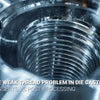How Does CNC Machining Advance Composite Material Applications?

How Does CNC Machining Advance Composite Material Applications?

In today's precision manufacturing landscape, CNC machining of composite materials stands at the forefront of innovation. With a global market value of $118.49 billion in 2024, composite materials are reshaping manufacturing capabilities across industries.
The integration of composite materials with CNC machining technology opens new possibilities for creating complex, high-performance parts. This combination delivers exceptional strength-to-weight ratios and design flexibility that traditional materials can't match.
As manufacturers seek reliable solutions for composite material processing, understanding the intersection of CNC technology and composite materials becomes crucial. Let's explore how this manufacturing approach delivers value across different applications.
[Table of Contents]
- What Makes Composite Materials Unique in CNC Machining?
- Which Composite Materials Lead Industrial Manufacturing?
- How Do CNC Machines Handle Complex Composite Parts?
- What Technical Challenges Impact Composite Machining?
What Makes Composite Materials Unique in CNC Machining?
Understanding composite materials' distinct characteristics is essential for successful CNC machining operations. These engineered materials combine two or more components to create properties superior to those of individual materials.
Composite materials excel in specific areas that make them particularly valuable for CNC machining applications. Their high strength-to-weight ratio, corrosion resistance, and ability to be tailored for specific performance requirements make them ideal for demanding applications.

The unique layered structure of composites requires specialized machining approaches. Unlike traditional materials, composites demand careful consideration of fiber orientation, tool selection, and cutting parameters to achieve optimal results. This precision approach aligns perfectly with the capabilities of modern industrial machinery, enabling manufacturers to fully leverage composite materials' advantages.
Which Composite Materials Lead Industrial Manufacturing?
The landscape of industrial manufacturing features several prominent composite materials, each with distinct advantages for specific applications. Carbon Fiber Reinforced Polymer (CFRP) and Glass Fiber Reinforced Polymer (GFRP) lead the market, alongside emerging options like Metal Matrix Composites (MMC) and Aramid Fiber Reinforced Polymer (AFRP).
These materials have found their place in various industries due to their exceptional properties. CFRP's lightweight nature and high strength make it ideal for aerospace components, while GFRP's cost-effectiveness suits construction applications. MMCs are particularly valuable in applications requiring high thermal conductivity and wear resistance.
When selecting composite materials for CNC metals and plastics processing, manufacturers must consider factors like mechanical properties, cost, and machining requirements. Each material type presents unique challenges and opportunities in the manufacturing process.
Let's examine each material's specific characteristics:
- Carbon Fiber Reinforced Polymer (CFRP):
- Highest strength-to-weight ratio
- Superior fatigue resistance
- Excellent dimensional stability
- Widely used in aerospace and high-performance automotive parts
- Glass Fiber Reinforced Polymer (GFRP):
- Cost-effective alternative to CFRP
- Good electrical insulation properties
- Resistant to chemical corrosion
- Popular in construction and marine applications
- Metal Matrix Composites (MMC):
- Enhanced thermal conductivity
- Improved wear resistance
- Higher temperature capability
- Common in aerospace and automotive brake systems
- Aramid Fiber Reinforced Polymer (AFRP):
- Outstanding impact resistance
- Good vibration damping properties
- High tensile strength
- Used in ballistic protection and aerospace applications
How Do CNC Machines Handle Complex Composite Parts?
Modern CNC machines employ sophisticated techniques to process composite materials effectively. The precision control and repeatability of CNC technology make it ideal for creating complex geometric shapes while maintaining tight tolerances.
For successful composite machining, manufacturers must consider factors like cutting speed, feed rate, and tool selection. These parameters significantly impact the final product quality and production efficiency. The machining process typically involves several key stages:
- Pre-machining Analysis:
- Material composition evaluation
- Fiber orientation assessment
- Tool path optimization
- Cutting parameter selection
- Setup and Fixturing:
- Custom fixture design for composite materials
- Proper workpiece support to prevent deformation
- Vacuum systems for dust collection
- Temperature monitoring systems

The integration of rapid prototyping with composite CNC machining allows manufacturers to validate designs and processes before full-scale production. This approach helps optimize manufacturing parameters and reduce material waste.
Advanced CNC machining centers often incorporate specialized features for composite processing:
- High-speed spindles for optimal cutting conditions
- Sophisticated cooling systems to manage heat generation
- Advanced tool monitoring systems
- Automated tool changing capabilities
- Real-time process monitoring and adjustment
Quality Control Measures:
- In-process inspection systems
- Surface finish measurement
- Dimensional verification
- Non-destructive testing methods
- Material integrity checks
The success of composite machining relies heavily on:
- Tool Selection:
- Diamond-coated tools for extended life
- Specialized geometries for composite cutting
- Multi-flute designs for clean cuts
- Proper tool coating selection
- Process Parameters:
- Optimized cutting speeds
- Appropriate feed rates
- Depth of cut considerations
- Cooling strategy implementation
- Environmental Controls:
- Dust extraction systems
- Temperature monitoring
- Humidity control
- Clean room conditions when required
What Technical Challenges Impact Composite Machining?
Common challenges in composite machining include delamination, fiber breakout, and tool wear. These issues can affect both product quality and production costs if not properly addressed.
Manufacturers must implement specific strategies to overcome these challenges, such as selecting appropriate cutting tools and optimizing machining parameters. The right combination of speed, feed, and depth of cut helps minimize these issues.
Successful composite machining requires careful attention to detail and continuous monitoring of process parameters. Advanced quality control measures and regular tool maintenance help ensure consistent results and minimize production issues.
Conclusion
The integration of CNC machining with composite materials continues to expand manufacturing possibilities. With market projections showing a 6.05% CAGR through 2034, this field presents significant opportunities for innovation and growth.
Understanding the unique characteristics of composite materials, selecting appropriate manufacturing methods, and addressing technical challenges are key to successful implementation. As technology advances, we can expect to see even more sophisticated applications of CNC machining in composite material processing.
[External Links Recommendation]
[Complex Composite Parts](https://at-machining.com/composite-cnc-machining/)[^1]
[Composite Materials Application](https://www.addcomposites.com/post/where-are-composites-used)[^2]
[advanced manufacturing techniques](https://www.twi-global.com/technical-knowledge/faqs/faq-what-is-advanced-manufacturing)[^3]
[Composite CNC Machining](https://www.3erp.com/blog/composite-cnc-machining/)[^4]
[Industrial Manufacturing](https://www.advancedtech.com/blog/manufacturing-trends/)[^5]
---
[^1]: Understanding Complex Composite Parts can enhance your knowledge of advanced manufacturing techniques and their applications.
[^2]: Exploring Composite Materials Application will provide insights into their versatility and importance in modern manufacturing processes.
[^3]: Learning about advanced manufacturing techniques can keep you updated on innovations that drive efficiency and quality in production.
[^4]: Explore this link to understand the innovative processes and benefits of Composite CNC Machining in modern manufacturing.
[^5]: Discover the latest trends and technologies shaping Industrial Manufacturing to stay ahead in the industry.
-
Posted in
Composite Materials





